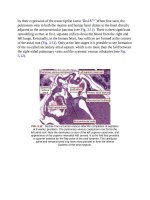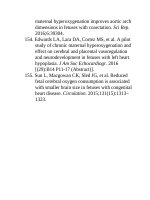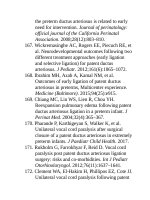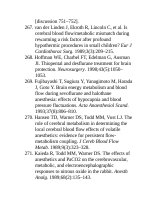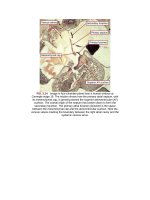Andersons pediatric cardiology 1892
Bạn đang xem bản rút gọn của tài liệu. Xem và tải ngay bản đầy đủ của tài liệu tại đây (83.4 KB, 3 trang )
growthvelocityandlowerweight-for-agez-scoreatstageIIpalliationpredictsa
morecomplexpostoperativecourse.30–32
InpatientPreparationforInterstage
Management
MedicalReadiness
ReadinessfordischargeafterstageIpalliationincludesunderstandinganatomic
andphysiologicrisksspecifictoeachpatientbeyondthebasicprinciplesof
havingadualdistributioncirculation.Knowledgeofanatomicvariantsand
potentialresidualorrecurrentlesionsmaynotonlydirectprescribedmedical
therapiesbutalsoinformtheteamaboutfollow-upfrequency,diagnostic
imaging,ortimingofsubsequentinterventions.Likewise,physiologic
vulnerabilitythatisoftenmanifestedduringphysiologicdemandingtaskssuch
asfeeding,bathing,andnormalinfantirritabilitymaywarrantanalterationin
prescribedmedicaltherapiesoreventhedecisiontodischarge.Infact,asubset
ofstageIpalliationsurvivors,specificallythosewithamorecomplicated
perioperativecourse,maybenefitfrominpatientmanagementduringthe
interstageperiod.3,21Determiningmedicalreadinessfordischargeisdependent
oncomprehensivecommunicationbetweencareteamsandspecialistsasthe
patientmovesthroughthevariousphasesofinpatientcare,particularlyfromthe
intensivecareunittotheacutecarefloor.
PharmacologicManagement
Optimizingcirculatoryfunctionduringtheinterstageperiodisacriticalpartof
interstagecare.Determiningchronicmedicalsupportshouldbegininthe
intensivecareunitwhilethepatientisfullymonitoredandasheorsheis
liberatedfromvasoactivemedications.Prescribeddrugtherapiesremainvariable
amonginstitutionsandmorecommonlyincludechronicafterloadreduction,
diuretics,and/ordigoxinforsupportofthecardiovascularsystem.
Angiotensin-convertingenzymeinhibitormaybebeneficialinpatientswho
havehighapulmonary-to-systemicflowratiointheearlypostoperativeperiod,
greaterthanmildatrioventricularvalveinsufficiency,evidenceofcongestive
heartfailure,ornoninvasiveevidenceofelevatedsystemicvascularresistance.If
thebloodpressureissuboptimallycontrolledwithangiotensin-converting
enzymeinhibitortherapyorifthepatientdemonstrateshighsympathetictone
(persistentlyelevatedheartrateand/orbloodpressurewhencalmandwith
normalbabyactivity),enteralortransdermalclonidinemaybeeffective.
Afterloadreductionistitratedwithcaution,particularlywhencombinedwith
diuretictherapy,toavoiddiastolichypotensionthatcouldresultinimpairmentof
coronaryflowparticularlyinpresenceofamodifiedBlalock-Taussig-Thomas
shunt.Chronictachypneaduetopulmonaryedemaeitherfromelevated
pulmonary-to-systemicflowratio,elevatedend-diastolicpressurefrom
myocardialdysfunction,oratrioventricularvalveinsufficiencygenerally
warrantsmanagementwithdiuretics.However,cautionshouldbetakentoavoid
intravascularvolumedepletionthatmightreducetotalcardiacoutput,aswellas
increasetheriskofshuntthrombosisduetochangesinbloodviscosity.
Persistenceofheartfailuresymptomsorexcessivehypoxiaduringtitrationof
afterloadreductionanddiuretictherapymaywarrantdiagnosticinvestigationto
ruleoutaresidualoracquiredanatomiccause.
Arrhythmiashavebeenpostulatedasanimportantmechanismforinterstage
mortality.TheincidenceoftachyarrhythmiasafterstageIpalliationhavea
reportedincidenceashighas34%,whereastheincidenceofheartblockismuch
lower.25Althoughthepresenceoftachyarrhythmiaswasassociatedwithlonger
ventilationandhospitallengthofstay,itwasnotassociatedwithhospitalor
interstagemortalityinthePediatricHeartNetworkSingleVentricle
Reconstructiontrial.26Intheabsenceofdocumentedarrhythmias,digoxinis
commonlyusedduringtheinterstageperiodandhasbeenfoundtobeprotective
againstinterstagemortalityintwolargemulticentercohorts—onefromthe
PediatricHeartNetworkSingleVentricleReconstructiontrialandtheotherfrom
theNationalPediatricCardiologyQualityImprovementCollaborative(NPCQIC).33,34Themechanismbywhichdigoxinisprotectiveremainselusivebut
mayinfactbeduetoitseffectsontheneurohormonalaxisofheartfailure.
Prophylacticantiplatelettherapywithlow-doseaspirin,usually20.25mgto
40.5mgdaily,isthemostcommonlyadministeredantithromboticagentduring
theinterstageperiod.35Increasingawarenessofaspirinresistanceandtheeasein
whichitseffectcanbetestedhasledtoincreasedsurveillancewithplatelet
aggregationstudiesforaspirindosing.36–38Ifevidenceofatrialorvenousclotis
found,subcutaneouslow-molecular-weightheparinmayalsobewarranted.
UnderstandingtheFamilyNeeds
Successfulinterstagemanagementreliesonfamilyinvolvementaswellas
